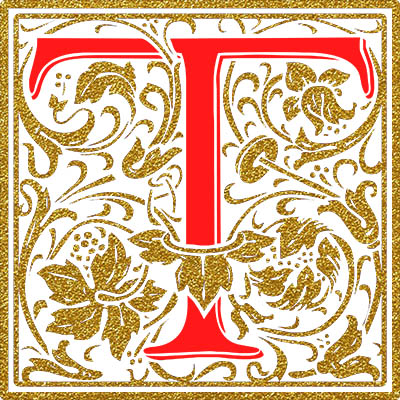Briefly in English
‘Missale Aboense’ is a bibliographical monument. It was delivered for the Diocese of Turku and printed in 1488 in Germany. It is not only the first book printed for Finland and the only incunable (a book printed before 1501) in our country, but also perhaps the highest quality printing product that has ever been made for Finland.
The edition of the missal printed on parchment is the greatest treasure of the library of the Open Science Centre, University of Jyväskylä. The Jyväskylä copy is compiled from loose leaves that have survived to this day in the bailiffs’ account books. It is a bit uncomplete like all the other surviving copies. The Jyväskylä Missal contains 498 pages.
Only one copy of ‘Missale Aboense’ has survived in its original binding. This parchment missal, that originally belonged to the parish of Halikko, is now owned by the Royal Library of Copenhagen. In addition, two loose-leaf versions printed on parchment alike the Jyväskylä Missal have survived. One can be found in the collections of the Finnish National Library in Helsinki and the other in the Royal Library in Stockholm. In addition, there are some loose parchment leaves in Helsinki, that come from six different copies of the ‘Missale Aboense’. This book is a real rarity!
‘Missale Aboense’ was also printed on paper, which was a cheaper printing material. A total of twenty paper versions have survived in Finland and Sweden. The number of the original edition of ‘Missale Aboense’ is unknown, but it is estimated to have been a little over two hundred copies.
‘Missale Aboense’ is a large-sized, over a 500-page complete missal intended to be kept on the altar (missale plenum). It contains all the parts needed for the mass. The texts are related to the service and communion in the order set by the ecclesiastical calendar:
- after the first page, the Turku Diocese calendar
- consecration of water with exorcisms
- changing texts of the mmass from the first Sunday of Advent to the Corporis Christi celebration after Trinity Day
- the permanent parts of the mass and the texts belonging to the communion liturgy and the Canon Missae
- the changing texts of the mass from the first Sunday after Trinity Day to the end of the church year, as well as the texts of the church consecration and the church mass
- the changing texts of the saints' feasts of the mass
- two consecutive sequence sections
The mass book also includes music. ‘Missale Aboense’ contains a lot of tunes written by hand on the red stave.
Missale Aboense’s route to Jyväskylä
 The survival of the ‘Missale Aboense’ to this day is a small miracle, since after the 16th century religious reformation, our country's medieval ecclesiastical literature was largely lost. Liturgical texts that became unnecessary were discarded. Since writing and bookbinding material was expensive, pieces of parchment that had lost their value were recycled for other purposes.
The survival of the ‘Missale Aboense’ to this day is a small miracle, since after the 16th century religious reformation, our country's medieval ecclesiastical literature was largely lost. Liturgical texts that became unnecessary were discarded. Since writing and bookbinding material was expensive, pieces of parchment that had lost their value were recycled for other purposes.
Early central administration account books from 1537–1634 are called the bailiffs’ accounts. The Swedish ruler Gustav I of Sweden (1496–1560) carried out several major reforms in the country. The most important reforms were the central administration of the kingdom and the religious reformation, with which ties to the Church of Rome were severed and the church's property was largely transferred to the crown. Both of Gustav's reforms also had a central effect on the later stages of ‘Missale Aboense’.
Gustav's new taxation system required the bailiffs to keep accurate records of their tax collection. In addition, the bailiffs had to deliver their account books to Stockholm for verification. The cover material for the account books was conveniently made of parchment pieces of liturgical texts condemned to be thrown away, that the impoverished church sold to bookbinders. In this context, the Finnish missal was also subject to recycling, changed its form and moved to Stockholm for a couple of centuries.
The bailiffs’ account books returned to Finland after the peace treaty of Hamina in 1809, as they were returned based on the treaty drawn up by Sweden and Russia. However, it took a few decades before more attention was paid to the cover pages and fillings of the account books. As a senator, Fredrik Wilhelm Pipping (1783–1868), also the librarian of the Imperial Alexander University of Helsinki, brought about a decision to remove the cover materials and transfer them to the University's library. In this way, a collection of approximately 10,000 parchment leaves was created, which contained parts of approximately 1,000 books. Existing ‘Missale Aboenses’ were also compiled from the leaves.
‘Missale Aboense’ finally arrived in Jyväskylä in the 1930s, when the Helsinki University Library sent one of the parchment copies to the library of the Jyväskylä College of Education for safekeeping.
This action was probably intended to protect the missal, because keeping two such book rarities in the same place had its own risks. At that time, Jyväskylä was the only inland city with a larger scientific library, which made it an ideal storage and safe haven for the national treasure.
‘Missale Aboense’ was given to the Jyväskylä University Library with a donation deed in 1974 at the inauguration of the new library building. In 2019–2021, the library building was completely renovated. In the same breath ‘Missale Aboense’ changed its form to digital in early 2022.
